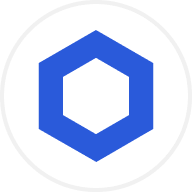Chainlink’s Decentralized Oracle Network: Revolutionizing Blockchain Connectivity and DeFi
Introduction to Decentralized Oracle Networks
Blockchain technology has revolutionized industries by enabling secure, transparent, and decentralized systems. However, blockchains are inherently isolated from external data, which limits their ability to interact with real-world information. This is where decentralized oracle networks come into play. Oracles act as bridges between blockchains and external data sources, enabling smart contracts to access off-chain information securely and reliably.
Among the leading decentralized oracle networks, Chainlink has emerged as a critical infrastructure for blockchain ecosystems. By providing tamper-proof data feeds, Chainlink empowers the development of decentralized applications (dApps) and DeFi projects that rely on accurate and secure external data.
Key Features of Chainlink and LINK Tokenomics
LINK Token: The Backbone of Chainlink
The native cryptocurrency of the Chainlink network, LINK, plays a vital role in its ecosystem. It is used for:
Transaction Fees: Facilitating payments for oracle services.
Node Operator Payments: Rewarding operators for providing reliable data.
Staking Rewards: Incentivizing participants to secure the network.
This tokenomics model ensures the integrity and reliability of Chainlink’s oracle services by aligning incentives for all participants.
Staking Mechanism: Enhancing Security
Chainlink’s staking mechanism allows users to lock their LINK tokens to secure the network and earn rewards. This approach strengthens the network’s security by ensuring that node operators have a financial stake in maintaining accurate and reliable data feeds.
Cross-Chain Interoperability
Chainlink supports cross-chain interoperability, enabling seamless interaction between different blockchain networks. This feature is crucial for the development of multi-chain dApps and DeFi projects, allowing them to leverage data and functionality from multiple ecosystems.
Use Cases of Chainlink in DeFi
Decentralized finance (DeFi) has become one of the most prominent applications of blockchain technology, and Chainlink’s oracles play a pivotal role in its ecosystem. Here are some key use cases:
Price Feeds
Chainlink’s decentralized price oracles provide accurate market prices for cryptocurrencies. These feeds are essential for DeFi platforms offering services like:
Lending and Borrowing: Ensuring fair collateral valuations.
Trading: Maintaining accurate exchange rates.
Stablecoins: Pegging assets to real-world currencies.
Insurance Payouts
Smart contracts powered by Chainlink oracles can automate insurance payouts based on real-world events, such as weather conditions or flight delays. This eliminates intermediaries, ensuring faster and more transparent claims processing.
Yield Farming
Yield farming platforms use Chainlink’s data feeds to calculate rewards and interest rates accurately. This ensures fair compensation for users participating in liquidity pools.
Chainlink VRF: Ensuring Tamper-Proof Randomness
Random number generation is a critical component of many blockchain applications, including gaming, lotteries, and NFT minting. Chainlink VRF (Verifiable Random Function) provides cryptographic proof for generating random numbers, ensuring tamper-proof results for smart contracts. This feature enhances the security and fairness of decentralized systems.
Competitor Analysis: Band Protocol, API3, and Orakuru
While Chainlink dominates the decentralized oracle space, several competitors offer unique features:
Band Protocol
Focus: Cross-chain data availability.
Consensus Mechanism: Delegated proof-of-stake (DPoS).
Governance: Tokenholders participate in network upgrades and decision-making.
API3
Approach: Relies on an API network for data input and timing.
Governance: Emphasizes tokenholder participation.
Unique Tools: Offers API3 QRNG for decentralized randomness.
Orakuru
Blockchain: Built on Binance Smart Chain.
Specialization: Oracle services for DeFi applications.
Features: On-chain governance and a reputation system for validators.
Integration of Traditional Finance with Blockchain
Chainlink has partnered with major Web3 protocols and traditional financial institutions, such as SWIFT, to bridge the gap between blockchain and traditional finance. These collaborations facilitate the integration of decentralized networks with legacy systems, enabling over $15 trillion in transaction value. By doing so, Chainlink is driving the adoption of blockchain technology in mainstream industries.
Development Tools for dApps
Building decentralized applications requires robust tools and frameworks. Developers can leverage the following:
Solidity and Hardhat
Solidity: The most widely used programming language for writing smart contracts.
Hardhat: A development environment for testing and deploying smart contracts.
Together, these tools form the backbone of dApp development.
API Integration
APIs like Chainlink VRF and API3 QRNG enable developers to incorporate features such as random number generation and external data feeds into their dApps. These integrations enhance the functionality and security of decentralized systems.
Security and Decentralization in Oracle Networks
Security and decentralization are paramount in oracle networks. Chainlink achieves this through its decentralized architecture, which eliminates single points of failure. By distributing data requests across multiple nodes, Chainlink ensures that its oracles are resistant to manipulation and outages.
Conclusion
Chainlink’s decentralized oracle network has revolutionized blockchain connectivity, enabling smart contracts to interact with real-world data securely and reliably. With features like LINK tokenomics, staking, cross-chain interoperability, and tamper-proof randomness, Chainlink has become a cornerstone of the DeFi ecosystem. As blockchain technology continues to evolve, Chainlink’s role in bridging the gap between decentralized networks and external data sources will remain indispensable.
© 2025 OKX. Este artículo puede reproducirse o distribuirse en su totalidad, o pueden utilizarse fragmentos de 100 palabras o menos de este artículo, siempre que dicho uso no sea comercial. Cualquier reproducción o distribución del artículo completo debe indicar también claramente lo siguiente: "Este artículo es © 2025 OKX y se utiliza con permiso". Los fragmentos permitidos deben citar el nombre del artículo e incluir su atribución, por ejemplo "Nombre del artículo, [nombre del autor, en su caso], © 2025 OKX". Algunos contenidos pueden generarse o ayudarse a partir de herramientas de inteligencia artificial (IA). No se permiten obras derivadas ni otros usos de este artículo.



